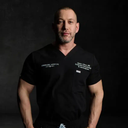Thank you for your question. You’re asking an interesting question about hormonal manipulation for transgender pursuit, balancing hormone levels of testosterone being virtually zero, and estrogen levels close to a 100, thinking a treatment like Acell plus PRP could result in permanent prevention of hair loss.


